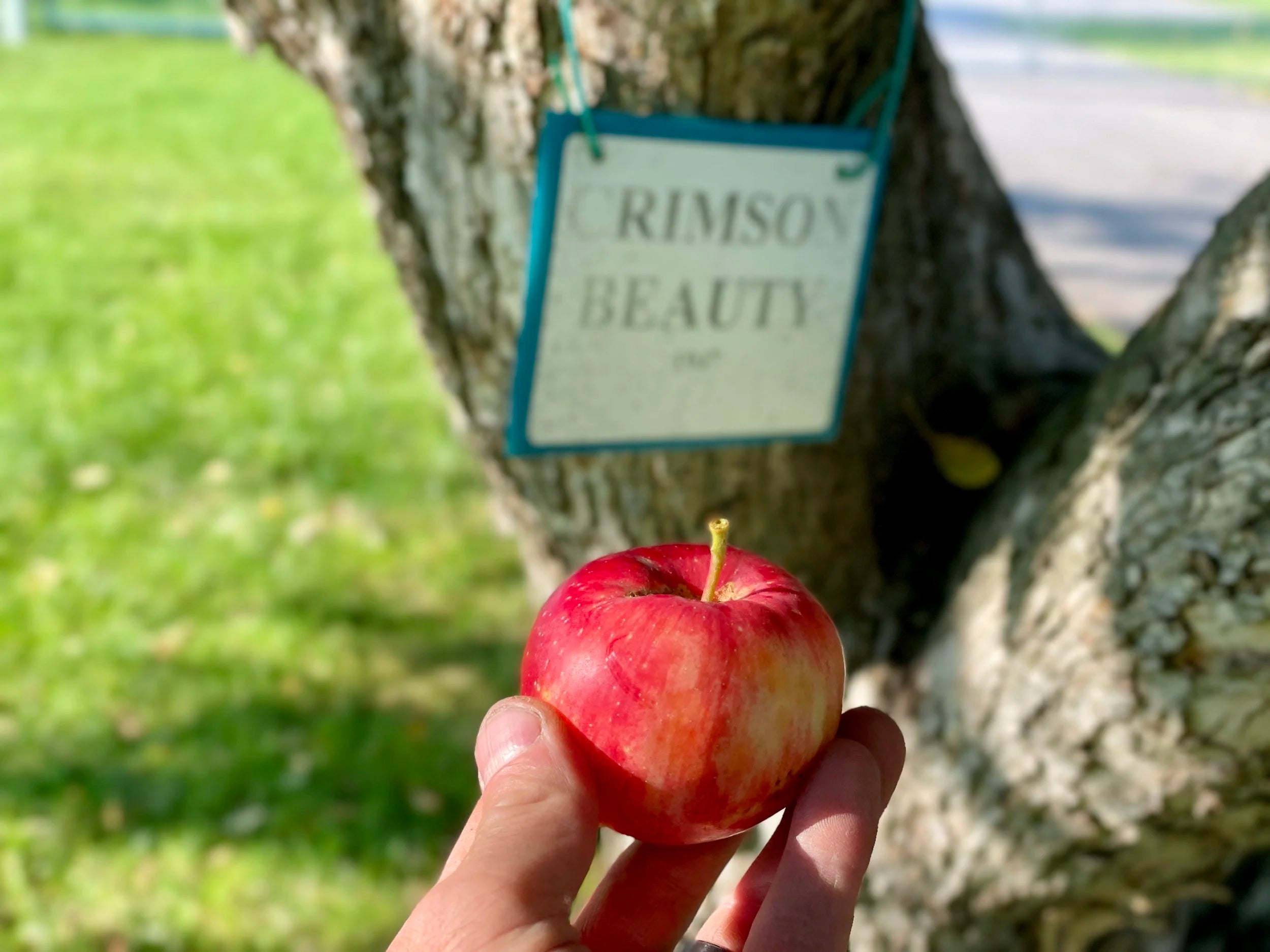

Crimson Beauty Apple
Reliable shipping
Flexible returns
Crimson Beauty: A Landmark in Apple Breeding History
Crimson Beauty holds a special place in the history of pomology as the first known controlled apple cross. In 1866, Francis Peabody Sharp crossed Fameuse (one of McIntosh’s parents) with New Brunswicker, an all-purpose apple valued for both fresh eating and baking. The result was Crimson Beauty—a summer apple traditionally labeled by nurseries as suitable only for culinary use, sauces, and processing.
However, when we tasted it fresh off the tree at Benson’s Farm in Missoula on August 14, 2024, we were pleasantly surprised by its fresh eating quality. Interestingly, Bruce Benson had planned to remove the Crimson Beauty tree on his property to make room for a parking lot. After we explained the tree’s historical importance, he chose to keep it (see photo). The tree, planted by Bruce’s grandfather in 1947, remains the largest and oldest Crimson Beauty specimen we’ve seen in Montana.
Flavor Profile and Culinary Use
From our 2024 taste notes:
“Intense flavor—sweet at first, followed by tart—bursting with strawberry and other berry notes.”
Because it’s a summer apple, Crimson Beauty goes mealy quickly. For best results, we recommend harvesting slightly before full ripeness to extend its texture and shelf life. Picked at the right time, it can also be one of the earliest apples to use in pie.
Cold Hardiness
While we don’t yet know Crimson Beauty’s exact lower hardiness limit, it did survive the -33°F cold snap of 1957. Given that both Crimson Beauty and McIntosh are Fameuse seedlings, and McIntosh is reliably hardy to around -40°F, it’s reasonable to estimate that Crimson Beauty is hardy to somewhere between -35°F and -40°F.